Chapter 3
The role of IoT in smart cities- Security and surveillance
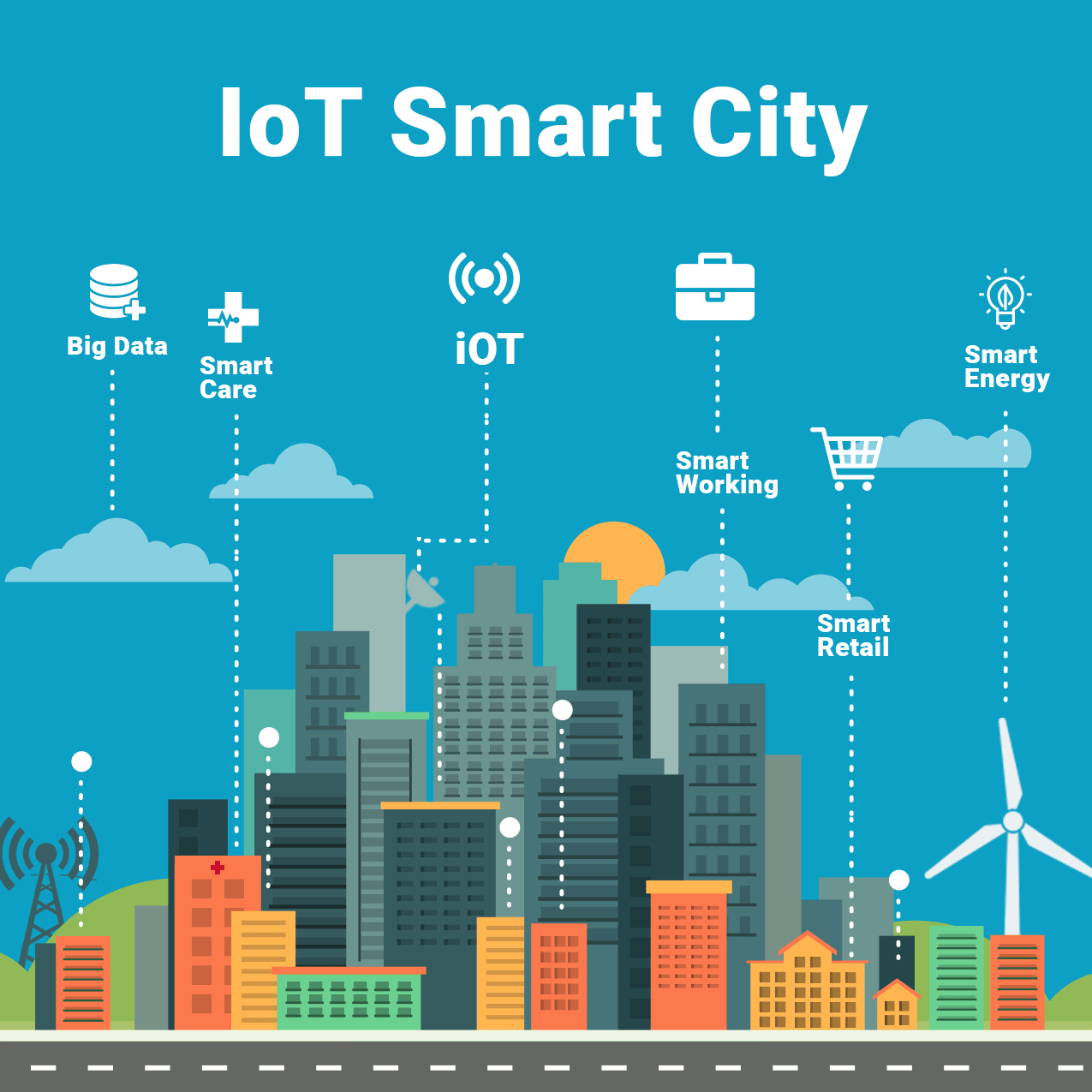
We have determined the term IoT (Internet of Things) means the quick development of numerous advanced gadgets and devices enabled with sensors – these devices are currently in billions – these gadgets can convey and communicate with others over the connected internet and they can be distantly checked and controlled.
The IoT incorporates just smart sensors and different gadgets. On the operational degree of IoT, for instance, climate information is gathered. IoT offers new freedoms for our cities to utilize information to oversee traffic, cut pollution, better use of infrastructure and keep residents protected and clean.
What Is a Smart City?
A smart city can be seen as a structure made out of data and correspondence innovations to create, send, and at last elevate feasible improvement practices to efficiently oversee urban areas and to address their developing urbanization challenges effectively.
A major piece of this system is an insightful organization of interconnected items that communicate information utilizing remote advancements like sensor-enabled devices and the cloud.
The IoT applications get, oversee, and investigate continuous information utilizing AI to help regions, ventures, residents, and urban areas everywhere to settle on better choices that can improve personal satisfaction.
Let’s move ahead to talking about different use instances of IoT for smart urban areas to see how these advances change urban areas and life.
For what reason do we require smart urban areas? Urbanization is a non-ending man-made wonder.
Today, 54% of overall individuals live in urban areas, an extent that is set to reach 66% by 2050.
With the general populace development, urbanization will add another 2.5 billion individuals to urban areas over the following thirty years.
Ecological, social, and financial supportability is an absolute necessity to stay up with this fast extension that is burdening our urban communities' assets.
What is the uplifting news?
Residents and neighborhood specialists are unquestionably more nimble to dispatch quick drives, and smart city innovation is central to progress and meeting these objectives.
Benefits of IoT
Organizations use IoT for creative administration and for checking broadly scattered cycles. Thus, they even can handle the last even from inaccessible spots as data is persistently taken care of into applications and information stockpiling.
IoT gives the benefit of realizing things ahead of time. Because of the minimal expense of IoT, it is currently conceivable to screen and oversee exercises that were already inaccessible. The monetary perspective is the best benefit since this innovation could supplant people who are accountable for observing and looking after provisions. Therefore, expenses can be altogether diminished and streamlined. IoT also makes it conceivable to acquire new knowledge for example partner climate impacts to modern creations.
- Improved city utility productivity
- City lighting systems productive administration
- Improved the city's traffic stream quality
- Increased public vehicle accommodation and proficiency
- General increment of city inhabitants' expectations for everyday comforts
- All city administrations activity unified observing
- Increased street wellbeing and convenient vehicle administrations
- Resource use decrease and natural improvement
- Collecting a lot of information on various parts of the city working.
What is the part of the cell phone in IoT?
- IoT for the normal individual is the cell phone since it is everywhere and every person carries a cell phone with them for the whole day.
- We use it for several everyday tasks to interface with other smart gadgets.
- Interaction with IoT utilizing a cell phone essentially because this is the figuring stage that we are destined to have with us anytime.
- Concerned that something isn't exactly directly with our IoT-empowered gadget (for example when your vehicle got a "Check Engine" light), we will want to run an expert vehicle filter symptomatic instrument from our cell phone to read demonstrative difficulty codes which is less expensive than carrying it to an expert grease monkey to analyze the issue.
- IoT implies that purchasers will have more alternatives with regards to smart gadgets (cooperation with those gadgets through the cell phone).
- More prospects like interfacing your cell phone with a washing machine to get a chart to see the water utilization and power in recent weeks/months.
- In all, every IoT gadget like a washing machine, fridges, or vehicles can send and get information to uniquely designed workers on the Internet – they can associate and impart over the Internet.
Understanding the job of smart city and its segments in the IoT period
Tokyo, the city with the world's biggest populace concentration continues developing and bragging the biggest number of individuals of the relative multitude of urban areas on the planet. Japan's capital is the biggest metropolitan territory worldwide with a population of 38 million individuals (38,050,000 individuals).
Also, 31 million individuals (32,275,000 individuals) live in Jakarta, Indonesia, and around 26 million in Delhi, India. As per numbers, 60% of the total population will live in significant urban areas by 2030.
The consequences: freshwater shortage, a load of trash, breakdown of traffic, and air pollution. How might we adapt to these difficulties? One key is Smart City - the arranged and clever city. It represents better personal satisfaction and lower utilization of assets. Here are the segments of the smart city and their effect in the IoT period:
1. Smart Infrastructure

 Cities should make the conditions for the nonstop turn of events: computerized innovations are turning out to be progressively significant, metropolitan systems and structures should be arranged all the more effectively and reasonably
Cities should make the conditions for the nonstop turn of events: computerized innovations are turning out to be progressively significant, metropolitan systems and structures should be arranged all the more effectively and reasonably
 CO2 discharges ought to be kept as low as workable for instance putting resources into electric vehicles and self- moved vehicles
CO2 discharges ought to be kept as low as workable for instance putting resources into electric vehicles and self- moved vehicles
 Smart urban areas utilize canny advances to accomplish an energy-proficient and harmless to the ecosystem system
Smart urban areas utilize canny advances to accomplish an energy-proficient and harmless to the ecosystem system
 Smart lighting should possibly give light when somebody strolls past them like setting brilliance levels and following every day use to lessen the need for electrical force
Smart lighting should possibly give light when somebody strolls past them like setting brilliance levels and following every day use to lessen the need for electrical force
2. The City Air Management Tool (CyAM)
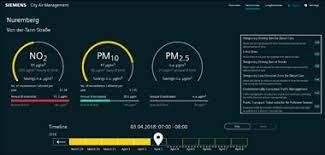
 Siemens has built up a total, cloud- based programming suite "The City Air Management Tool": Captures contamination information progressively and estimates outflows
Siemens has built up a total, cloud- based programming suite "The City Air Management Tool": Captures contamination information progressively and estimates outflows
 Forecasts up to 90% accuracy is feasible to acquire the outflows for the following three to five days
Forecasts up to 90% accuracy is feasible to acquire the outflows for the following three to five days
 It is the forecast of air pollution with the estimation of the viability and the advancements that are used which make the City Air Management apparatus exceptional
It is the forecast of air pollution with the estimation of the viability and the advancements that are used which make the City Air Management apparatus exceptional
 The forecast depends on a calculation that works with a counterfeit neural organization
The forecast depends on a calculation that works with a counterfeit neural organization
 CyAM is a cloud-based programming suite with a dashboard that showcases constant data on the air quality recognized by sensors across a city and predicts values for the impending three to five days
CyAM is a cloud-based programming suite with a dashboard that showcases constant data on the air quality recognized by sensors across a city and predicts values for the impending three to five days
 Cities can browse the 17 measures to recreate the following three to five days (impacts of the air quality for the forthcoming three to five days)
Cities can browse the 17 measures to recreate the following three to five days (impacts of the air quality for the forthcoming three to five days)
 Consequences: Introduction of new natural zones (low-discharge zones), speed cutoff points, or free open vehicle
Consequences: Introduction of new natural zones (low-discharge zones), speed cutoff points, or free open vehicle
 CyAM depends on MindSphere, Siemens' cloud-based, open working system for the Internet of Things (IoT)
CyAM depends on MindSphere, Siemens' cloud-based, open working system for the Internet of Things (IoT)
3. Road Lighting

IoT-based smart urban areas attempt to make the support and control of streetlights practical. They accomplish this by furnishing the streetlamps with sensors and associating them with a cloud-the-board system.
The sensors help to accumulate required and relevant information on illumination, development of individuals and vehicles, and public vehicle plan, time, year, etc. The ongoing information at that point joined with recorded information is taken care of with the AI calculations which help to dissect various circumstances and the measure of light needed for each situation. Accordingly, the smart lighting arrangement orders the streetlamp to light up, faint, turn off, or one based on the actual ecological conditions in this manner improving the general lighting plans.
Presently, for example, when people on foot or vehicles cross a specific area, the lights around that intersection change to a more bright setting.
Different urban areas like Miami, Paris, Madrid, and others have effectively executed intelligent street lighting arrangements with Miami being at the top with more than 500,000 connected streetlamps.
4. Traffic Management
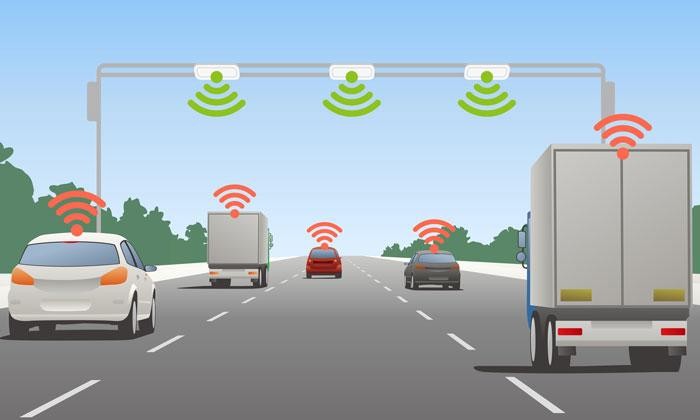
Intelligent urban communities guarantee that their residents travel as securely and proficiently as conceivable without time wastage and fuel and, to accomplish this, they go to carry out keen traffic arrangements.
These traffic arrangements utilize various sorts of sensors to decide the number, area, speed, and other important data in regards to the vehicles.
The working of these systems is as per the following: the street surface sensors and CCTV cameras send continuous traffic updates to center traffic the executives stage. This stage then investigates the information utilizing AI and updates the client about blockage and other related data. Furthermore, these stages additionally dissect the verifiable information utilizing AI to anticipate the busy times well ahead of time.
As well as giving reports concerning blockage, these systems also help to change traffic signals by responding to changing traffic conditions continuously.
Challenge for enormous smart urban communities is to streamline traffic
Los Angeles: As probably the busiest city on the planet, the city has executed a smart vehicle answer for control the traffic stream
Pavement incorporated sensors send ongoing updates of traffic stream to focal traffic the executives stage which examinations the information and naturally changes traffic signals to the traffic circumstance in practically no time
It utilizes verifiable information to anticipate where traffic can go – everything without human contribution
5. Public Safety Management

Public wellbeing is one of the significant worries for metropolitan urban communities and for upgrading security in these urban communities, the utilization of IoT-based innovations that offer constant observing, investigation, and dynamic devices are made.
The working of these systems is as per the following: these gadgets gather information from acoustic sensors and CCTV cameras sent all through the city and join this information to anticipate potential crime locations and convey public wellbeing arrangements, whenever required, rapidly. These systems in this way enable the security faculty to stop likely culprits or effectively track them.
Perhaps the main use of the security board is the utilization of shot discovery arrangement. This arrangement possibly utilizes associated amplifiers that are introduced all through the city. These mics continually gather sounds and combine them to the cloud stages and then break down these sounds by utilizing AI calculations to recognize a discharge. These stages can even gauge the area of the firearm by estimating the time taken by the sound to arrive at the amplifier.
The United States has effectively executed this arrangement in over 90 urban communities.
6. Water Management Systems
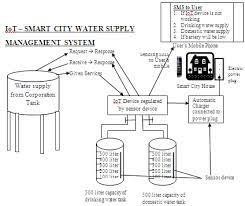
Metropolitan urban areas put a huge strain on the water supply and it has consequently gotten imperative to monitor water. In any case, fortunately, IoT can also be used to water the board, and the gadgets that permit this execution are called smart meters.
These meters permit water service organizations to follow water utilization and afterward break down the normal water utilization per family, industry, and so forth utilizing AI and compare it with current water usage.
AI calculations can additionally be used to foresee the future water utilization of these families and enterprises by dissecting the previous information. These meters can also break down water pressing factors, temperature, and quality and help to improve them whenever required.
Also, these meters additionally can distinguish potential leaks well ahead of time by checking the underground pipelines and understanding the information accordingly assisting with forestalling genuine water harms.
7. Smart Parking
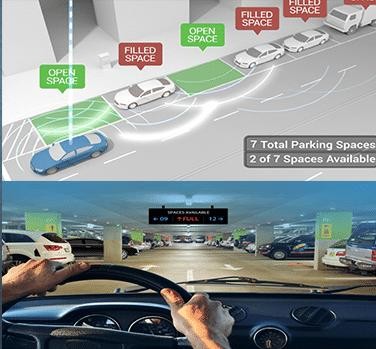
IoT lies at the center of the vehicle following stages; it can perform more advanced activities. Smart parking systems are used to discover empty areas for a vehicle at various public spots.
Smart parking’s In-Ground vehicle location sensor is the innovation that assumes a vital part in the Smart parking systems. Remote instruments like sensors are implanted into the asphalt of individual parking spots and these sensors gather information in regards to the circumstance and length of the space used by vehicles. This information is then moved to the cloud doors where it is handled lastly introduced to drivers as clear, reasonable experiences.
Further, the rush hours can also be recognized ahead of time with the assistance of AI calculations that make expectations by dissecting the previous patterns or by investigating the recorded information joined with constant information.
 These systems in this manner help to diminish the superfluous blockage, decline vehicle outflows, save fuel and time for individuals and lower the implementation costs.
These systems in this manner help to diminish the superfluous blockage, decline vehicle outflows, save fuel and time for individuals and lower the implementation costs.
 Smart parking systems distinguish when a vehicle has left the parking region
Smart parking systems distinguish when a vehicle has left the parking region
 The sensors in the ground report employing cell phone the driver, where they can track down a free parking spot
The sensors in the ground report employing cell phone the driver, where they can track down a free parking spot
 Others use vehicle input to tell correctly where the openings are and poke holding up vehicles towards the easiest course of action
Others use vehicle input to tell correctly where the openings are and poke holding up vehicles towards the easiest course of action
 Smart Parking is a reality today and doesn't need convoluted foundation and high venture making them ideal for an average size Smart City
Smart Parking is a reality today and doesn't need convoluted foundation and high venture making them ideal for an average size Smart City
8. Smart Waste Management
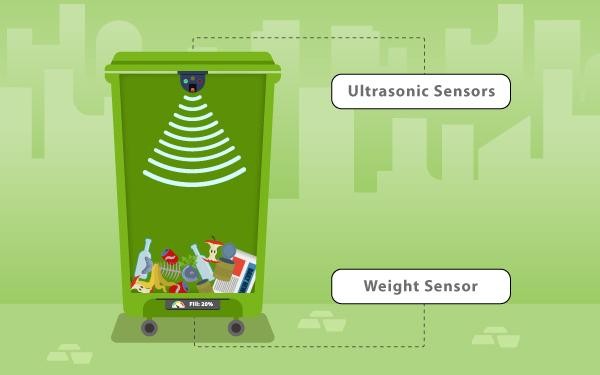
- Waste the board arrangements help to improve the productivity of waste assortment and to decrease operational expenses and better location the ecological issues related to a wasteful waste assortment.
- Waste holder gets a level sensor; when a specific limit is reached, the administration foundation of a transporter gets a notice on the cell phone.
Security and observation
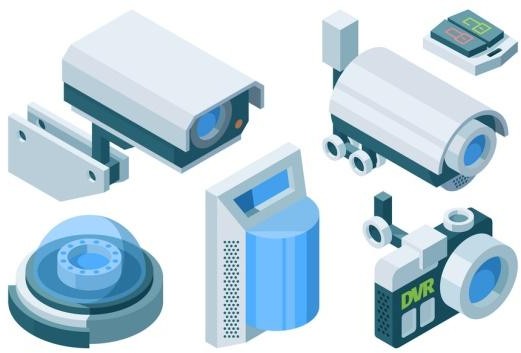
Security – safety measures are taken to prepare for wrongdoing, assault, damage, surveillance, and so forth Security and observation have become typical features of the industry. There are threats on the planet: some are close to home perils, others are threats or dangers related to resources. While there has been a lot of late discussion about the fitting use and measure of surveillance, any reasonable person would agree that some measure of safety and observation is fundamental in this day and age.
Security and surveillance arrangements incorporate everything from the most direct home checking systems and criminal alerts, to top quality, movement distinguishing cameras and retina examining security arrangements. Different types of networks – both fixed-line and remote – empower a fundamental sort of M2M security arrangements.
In any case, when information from the arrangements is accumulated and investigated to foresee conduct or defeat wrongdoings, and we can get to this information on basic stages and gadgets – including cell phones – we have entered the universe of the Internet of Things (IoT).
In 2012 there were 28 million security and observation IoT gadget associations overall developing to 170 million out of 2021 at a build yearly development pace of 22%. These include the gadget associations for homes and organizations.
Today, a significant level of safety and surveillance systems – particularly those in homes – is detached. We expect an expansion throughout the following ten years of the level of these sorts of home systems that are associated.
In the coming decade, we expect an expanded accentuation on four parts of safety and observation arrangements – and these four viewpoints feature the progressions we are seeing from an M2M to an IoT world:
- IP enablement – We expect expanded dependence on IP as the vehicle mode for security and surveillance arrangements. This expanded dependence on a typical convention like IP will work with the presentation of new arrangements and administrations including different home administration arrangements, video-based observation, facial acknowledgment arrangements, and others, just as help improve on the coordination of different arrangements. Utilizing a typical and promptly accessible interchanges convention will improve on arrangements and lower generally costs for these arrangements. In an IoT world, we expect dependence on IP as the fundamental convention.
- Integration with other home and business computerization systems – We expect home and business security and surveillance answers for being incorporated with different systems including home energy the board; security of extraordinarily labeled, significant private and business resources; and building robotization arrangements. This packaging of arrangements with a typical UI will add effortlessness to the client encounter and give a more extravagant arrangement of data to clients. We expect providers of customary private and business caution systems will be the most probable vendors of these kinds of incorporated arrangements.
- Video – Higher transmission capacity speeds and normalized applications for things like facial acknowledgment and complex development distinguishing proof make video-based surveillance arrangements more normal in the two homes and organizations.
- Mobile gadget access – Being ready to utilize standard cell phones including cell phones and tablets to get to security and surveillance information – regardless of whether authentic records or constant exercises – is something requested by numerous private and business purchasers of safety and observation arrangements. The expansion of cell phones and dynamic application designer networks make offering cell phone coordination substantially more practical than quite a while back.
Areas to use the Internet of Things in a Smart City
The quantity of dynamic sensors is as of now immense. The most intriguing thing is the likelihood to consolidate them with one another and additionally grow the potential for the execution of new arrangements. The following are a few instances of IoT advancements used as a feature of the keen city idea.
- Sensors introduced at different places of the designing foundation permit distinguishing crises.
- Energy asset meters (water, gas, power) send utilization information to the pertinent specialist co-ops without anyone else.
- Smart road lighting adjusts its brilliant capacity to changing lighting conditions (for instance, the fast haziness beginning because of climate changes).
- Smart trash receptacle sensors identifying fill levels communicate information to garbage removal administrations to advance assortment courses.
- Self-driving vehicles are essential for a keen city. Driverless public transportation means and vehicles will help decrease clog, fossil fuel byproducts, and mishaps identified with a human mistake.
- ITS (insightful vehicle systems) are used to control traffic signals, street information sheets, and signs, vehicle route, vehicle number plate acknowledgment, and information stream mix.
- As for the security territory, programmed face acknowledgment systems are broadly used. They dissect information from cameras introduced all through the city. Such systems permit finding lawbreakers or help with looking for missing grown-ups and kids.
- Intelligent stopping arrangements register when drivers leave certain parking garages and advise different drivers that free parcels are accessible.
- Electric force, water, and different asset utilization streamlining directly impacts the city's ecological condition.
- Residents get educated electronically and get basic administrations, for instance, from government organizations, solely on the web.
Future IoT Applications
Here is a brief look at modern IoT gadgets.
1. Vision Van of Mercedes-Benz
Vision Van of Mercedes-Benz is a van ideal for metropolitan regions and is portrayed by a few creative innovations on board like an independent robot conveyance. The robot can convey self-rulingly inside a sweep of ten kilometers. Another benefit would be that the bundle transporter saves a ton of time – while stacking and conveying. As a difference, manual stacking takes as long as 90 minutes and at one-shot stacking, it just requires around five minutes. The conveyance on the last mile is abbreviated by the mechanization innovation in the hold and the robots conveying corresponding to the deliverer by up to half.
2. Smart Eye
The keen eye innovation is the same as Google's most driven undertaking – the Glass. The brilliant eye is furnished with sensors, Wi-Fi, and Bluetooth to give choices and availability directly before your eye yet without causing an interruption.
This innovation makes it conceivable to understand messages, surf the web and that's only the tip of the iceberg.
The future of Smart Cities
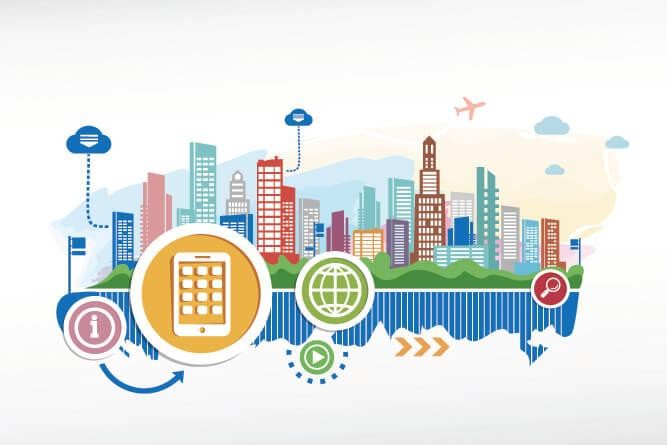
The more IoT is coordinated into the metropolitan climate and our everyday lives, the more information on efficiency, difficulties, and openings for system and natural improvement will be accessible. Out of the relative multitude of innovations that have as of late showed up, IoT can give the most grounded sway on the improvement of the urban communities of things to come.
If you think about the past and the present, you can see that most urban areas have framed entire IoT environments, encompassing their occupants with numerous advantages of versatility, security, medical services, and higher effectiveness. The world is changing, moving unquestionably towards the following modern revolution.
The fifth-generation (5G) portable correspondence execution will give another catalyst to the Internet of Things. This is turning out to be the new Internet of Things. The innovative improvement will prompt the rise of new arrangements making current urban areas more reasonable, more agreeable, and more secure for their residents.
The eventual fate of IoT is limitless. It gives arrangements in all areas including producing, design, café, medical care, training, and so forth. Smart urban areas can share a typical smart city stage, which bodes well particularly for little urban areas.
The cloud-based nature of IoT answers for Smart Cities is suitable by sharing a stage-dependent on open information. Little urban areas can frame a typical metropolitan environment. Along these lines, arrangements of little and enormous smart urban areas are organized and controlled through the focal cloud stage.
At last yet critically, the size of a city isn't an impediment while in transit to turning out to be "brilliant". Urban communities in each gathering can profit from wise innovations.
………………………………….















